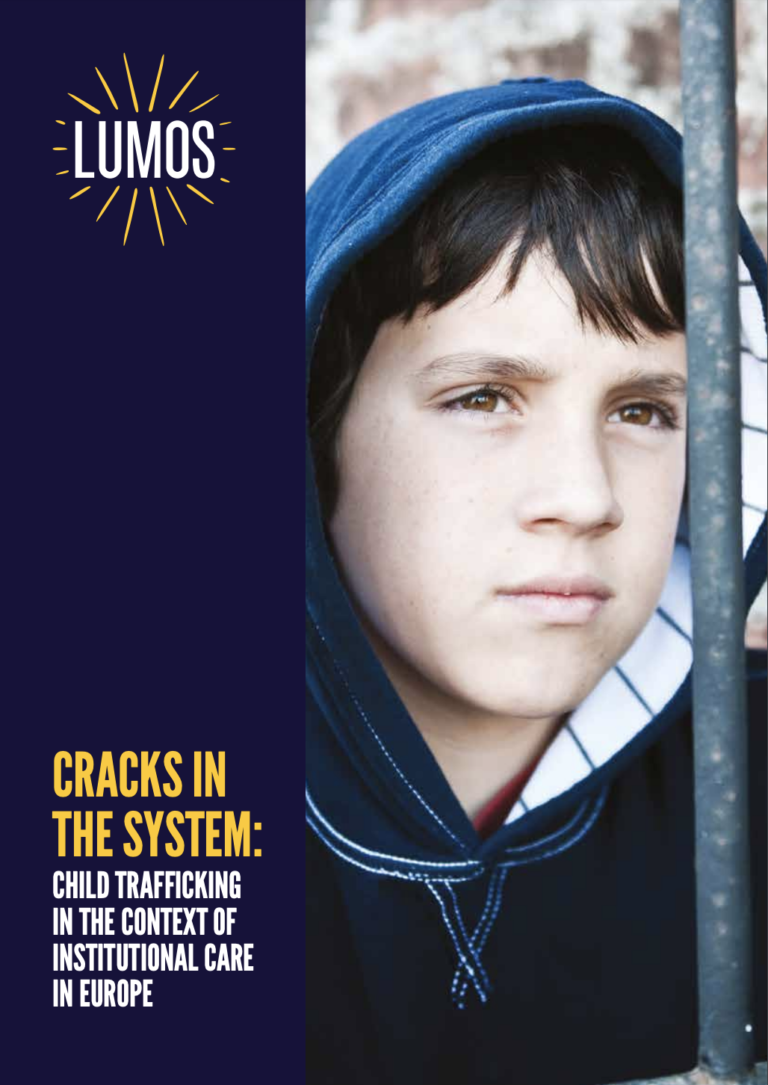Does Human Trafficking Exist in Your Community?: Examining Reports and Reviewing Facts
GuidanceA reference tool to assist community actors in finding reliable sources of data about human trafficking incidents in their area.
This report was researched and written by Chloe Setter, Emiel Coltof, Aisling Ledwith, Nyonsuabeleah Kollue, and Abigail Munroe.
Cracks in the System is a new report from Lumos that is the first of its kind to systematically explore the links between institutional care and child trafficking in Europe.
For many years, it has been known that traffickers directly target children in the care systems of many countries for recruitment into trafficking and that care leavers are at increased risk of exploitation. Despite this, laws and policies across Europe seldom connect the issues of child institutionalisation and child trafficking.
This new research identifies four main ways in which trafficking is linked with institutions for children, referred to as “institution-related trafficking”:
Cracks in the System aims to synthesise, appraise and build on the current evidence base on the phenomenon of institution-related trafficking and its manifestations in diverse contexts around Europe.
Importantly, it also provides recommendations on how to address the specific vulnerability to exploitation of children in or at risk of institutional care in Europe.

A reference tool to assist community actors in finding reliable sources of data about human trafficking incidents in their area.
This leaflet aims to inform agricultural workers from the EuropeanEconomic Area1 in Scotland of your rights and what you can do if youthink your rights are not being protected. It also sets out what youshould do to keep yourself and others safe duri...Read More
The economies of the six oil-rich Gulf states of Bahrain, Kuwait, Oman, Qatar, Saudi Arabia and the United Arab Emirates (UAE) are highly dependent on low-paid migrant workers from Asian states such as India, Nepal, Pakistan, Bangladesh, Sri Lan...Read More
All workers, and migrant workers in particular, should have access to grievance mechanisms that allow them to voice concerns without fear of punishment or retribution. The provision of these mechanisms by the employer is particularly crucial for mig...Read More